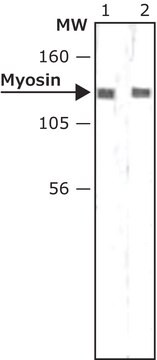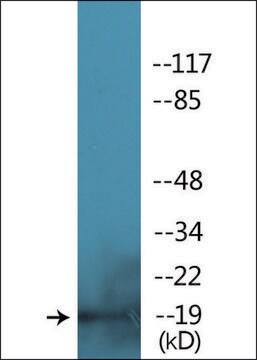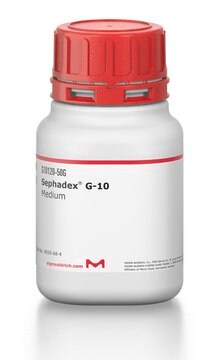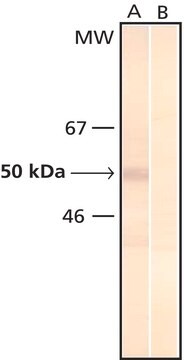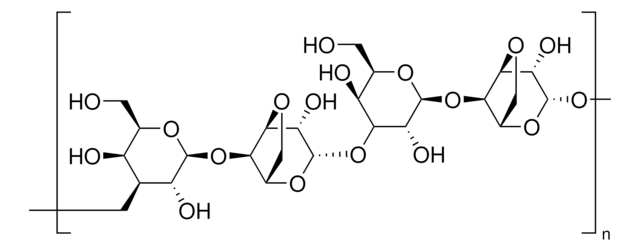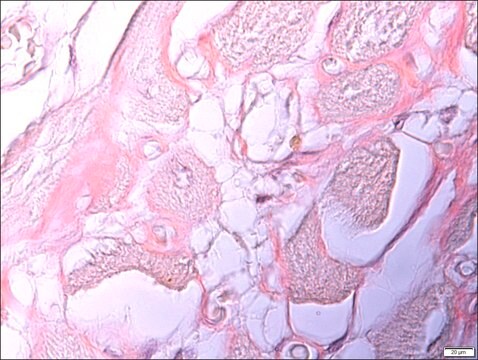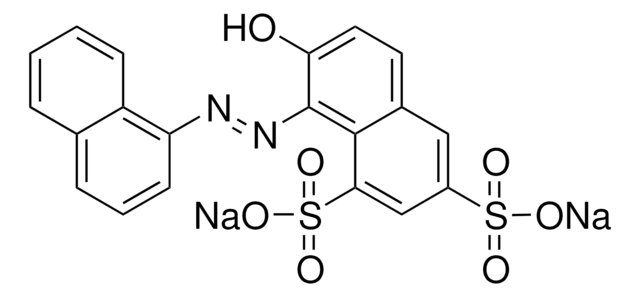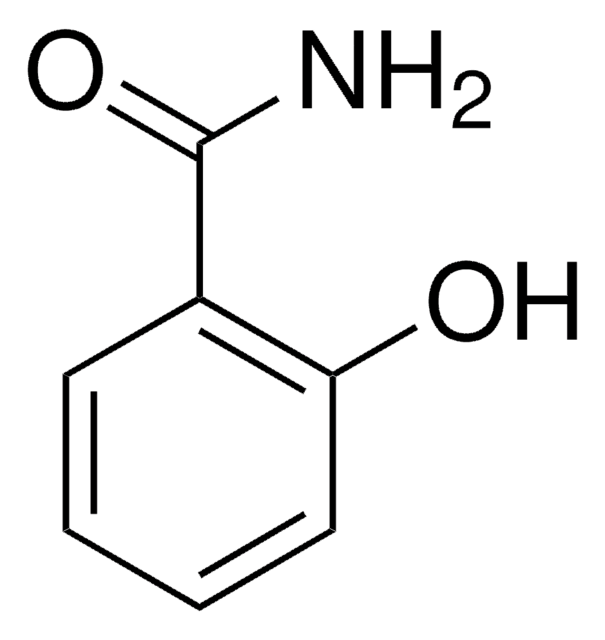M5688
Mimetic Orange 1 Ligand Affinity Adsorbent
suspension
Autenticatiper visualizzare i prezzi riservati alla tua organizzazione & contrattuali
About This Item
Prodotti consigliati
Stato
suspension
Livello qualitativo
Condizioni di spedizione
wet ice
Temperatura di conservazione
2-8°C
Applicazioni
Ligand affinity adsorbents are used in protein chromatography, affinity chromatography and dye resins. Ligand affinity adsorbents have been used to describe a simple protocol for the purification of Taq Polymerase from E. coli lysates as well as for the purification of other DNA polymerases.
Avvertenze
Warning
Indicazioni di pericolo
Consigli di prudenza
Classi di pericolo
Flam. Liq. 3
Codice della classe di stoccaggio
3 - Flammable liquids
Classe di pericolosità dell'acqua (WGK)
WGK 1
Punto d’infiammabilità (°F)
95.0 °F - closed cup
Punto d’infiammabilità (°C)
35 °C - closed cup
Dispositivi di protezione individuale
Eyeshields, Faceshields, Gloves, type ABEK (EN14387) respirator filter
Scegli una delle versioni più recenti:
Possiedi già questo prodotto?
I documenti relativi ai prodotti acquistati recentemente sono disponibili nell’Archivio dei documenti.
Emily R Beynon et al.
Plant physiology, 151(1), 253-261 (2009-07-17)
The explosive 2,4,6-trinitrotoluene (TNT) is a significant environmental pollutant that is both toxic and recalcitrant to degradation. Phytoremediation is being increasingly proposed as a viable alternative to conventional remediation technologies to clean up explosives-contaminated sites. Despite the potential of this
Sotirios Melissis et al.
Biotechnology journal, 2(1), 121-132 (2006-12-22)
The thermostable Thermus aquaticus DNA polymerase (Taq Pol) has been the key factor in transforming the initial PCR method into one with huge impact in molecular biology and biotechnology. Therefore, the development of effective affinity adsorbents for the purification of
S Melissis et al.
Journal of chromatography. A, 1122(1-2), 63-75 (2006-05-23)
The commercial availability of DNA polymerases has revolutionized molecular biotechnology and certain sectors of the bio-industry. Therefore, the development of affinity adsorbents for purification of DNA polymerases is of academic interest and practical importance. In the present study we describe
Jeannie Horak et al.
Analytical and bioanalytical chemistry, 400(8), 2349-2359 (2010-12-22)
The new affinity-type Mimetic Ligand™ B14 was coupled with a 1,2-diaminoethane spacer (2LP) and a [1,2,3]-triazole spacer (TRZ) to three different support media. In addition to the agarose-based PuraBead and the polymethacrylate-type Fractogel, three new polymeric support media were introduced
S J Burton
Methods in molecular biology (Clifton, N.J.), 11, 91-103 (1992-01-01)
Dye-ligand affinity chromatography is performed with an adsorbent consisting of a solid support matrix to which a dye has been cova-lently bonded. The protein mixture is passed through a packed bed of adsorbent that selectively binds proteins that are able
Il team dei nostri ricercatori vanta grande esperienza in tutte le aree della ricerca quali Life Science, scienza dei materiali, sintesi chimica, cromatografia, discipline analitiche, ecc..
Contatta l'Assistenza Tecnica.